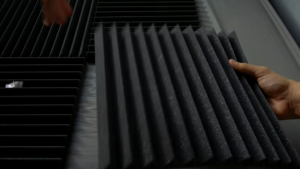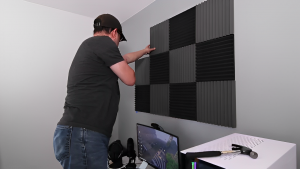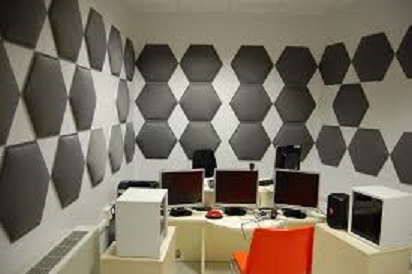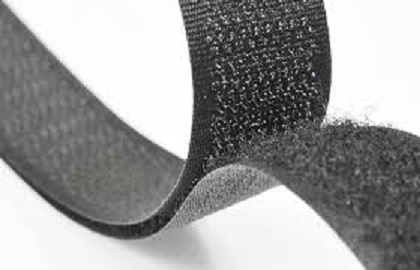Does Soundproof Foam Work Both Ways?
Sick of hearing your roommate’s terrible singing voice all the time? Or maybe you just want to keep your band practice from disturbing the neighbors. Well, soundproof foam might be the answer to your prayers. But hold up, before you start ordering a bunch of the stuff, let’s get real: can it actually stop the sound from leaking out and driving everyone crazy? That’s what we need to know, because let’s be honest, nobody wants to be the noisy neighbor or have to deal with one. So let’s dig in and figure out if soundproof foam is the real deal, or just another gimmick that won’t do the trick.

How Does Soundproof Foam Block Sound Waves?
One of the ways soundproof foam blocks sound waves is by trapping them within the cells of the foam. The air pockets in the foam act as a buffer, preventing sound from passing through. Additionally, soundproof foam is often treated with a noise-cancelling coating that helps to further reduce noise levels.
Soundproof panels work in a similar way by using an airtight seal to prevent sound waves from entering or exiting the space. Sound panels are also covered in a noise-cancelling material which absorbs and dissipates sound energy. This helps to create an acoustically-friendly environment for both homes and offices.
Both soundproof foam and panels can be effective at blocking out unwanted noise, making them ideal for use in sound-sensitive areas. When it comes to choosing the right noise blocking solution, it is important to consider your specific needs and how much soundproofing you require. Contact a soundproofing expert for advice on which product is best suited to your requirements.
Does Soundproof Foam Work Both Ways?
Sound-absorbing materials, including soundproof foam, are designed to reduce the amount of sound that reflects off of surfaces within a room. However, they are not effective at blocking sound transmission completely, so they may not prevent noise from entering or leaving a room.
Lily M. Wang, Professor of Architectural Engineering at the University of Nebraska-Lincoln, and John S. Bradley, Professor of Architectural Engineering at the University of Colorado Boulder.
Proper soundproofing necessitates a substantial amount of mass, which implies it will both reduce noise pollution on both sides of the barrier and keep noise out. As a result, soundproofing will ensure that no sound can enter or leave the room, benefitting people on both sides.
The biggest problem with soundproofing are places where air leaks – gaps in walls, ceilings, doors, etc., and it allows sound waves to resonate, resulting in noise. There are a few methods for dealing with this issue, but combining them all will result in a soundproofed space.
- Dense materials, such as fiberglass, wool, or cotton can help absorb vibrations and sound waves while filling wall cavities. The greatest materials include fiberglass, wool, or cotton. Wall cavities may be quite huge; stuffing them with a heavy substance like
- Decoupling involves removing wall and floor connections. It involves eliminating the possibility of vibrations spreading between walls.
- Acoustic damping helps to minimize the problem before it occurs, as it reduces sound resonance. This is generally achieved by increasing the amount of mass to absorb the sound waves and using acoustic management products to redirect sound waves.
- Adding weight to the area will help to absorb sound waves. Adding extra drywall or a product called mass loaded vinyl (link to Amazon) is also beneficial. This will aid in the reduction of reverberation and resonance.
Why Soundproof Foam Work Both Ways?

The acoustic foam usually has a textured side and a smooth side. On the textured side, sound reflection is far more effective since sound waves cannot bounce off it as readily and dissipate.
So, decoupling is meant to cut off the interior of a space from the outside world, while adding mass helps to absorb sound waves. Remember that not every solution works in both directions.
Soundproofing foam works both ways for the most part, but it’s most effective when the shape of the foam is uniform on both sides. The material of soundproofing foam does a lot of the soundproofing, but so does the shape in which it’s formed.
The fewer angles there are in soundproofing foam, the less likely it is for the sound waves to simply bounce off and repeat. Angles make it far more probable that the sound waves will be absorbed rather than deflected. As a result, soundproofing foam is frequently made with numerous angles within the acoustic panels to ensure that the sound waves do not deflect but instead are absorbed by the porous foam.
Let’s Improve Acoustics!
If you’re looking for a way to reduce the noise in your office, home, or other space, soundproofing foam may be a viable option. By understanding how sound waves work and using that information to create angled panels of soundproofing foam, you can help reduce noise levels and improve the acoustics of any room. We’re ready to help you make your space quieter! Tell us what’s on your mind in the comments below.



